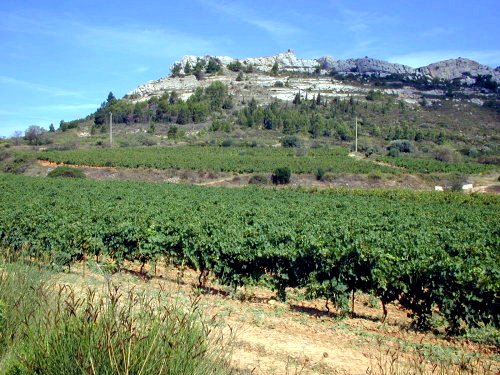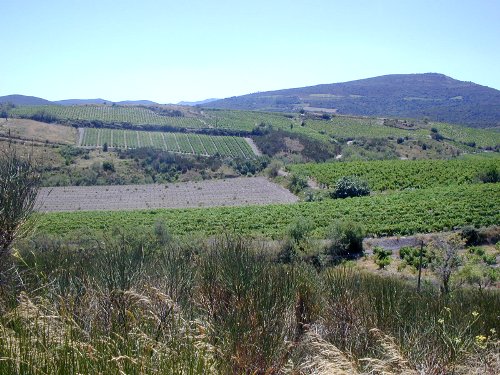Corbières Wines

The Corbières are a sparsely populated, mountainous piedmont of rocky escarpments, scrub-land and evergreen oak forest, windswept and relatively arid, a
natural wine-producing area which is attracting an increasing number of ambitious and innovative growers from outside. The Corbières wine Appellation (an AOC
since 1985) is characterised by its magnitude (87 villages covering c. 15000 hectares of vineyards producing c. 600,000 hectolitres of wine per year, almost all of it red)
and its geological and climatic diversity (all four geological eras are represented in its plethora of soils, and the climate ranges from the very hot low-rainfall Mediterranean
zone in the East to the higher, cooler and wetter zone in the West where the Atlantic exerts its influence).
The overbearing presence of bulk-market oriented
Co-ops and the near monopoly of a marketing giant called the Val d'Orbieu means that only 5% of Corbières production is bottled on
the premises. Quality can range from facile early-drinking wines to outstanding vins de garde. Apart from some of the smaller more adventurous Co-ops, most of the classy
Corbières come from private estates. The complexity of terroir in this kaleidoscope of an Appellation means that it is no easy task to describe the wine's typicity.
![]()

The older low-yielding Carignan vineyards, some nearly centenarian by now, provide the backbone and ageing potential of a typical Corbières, as also a characteristically spicy nose, while the blending with newer varieties like Syrah can add elegance, fine tannins and flowery aromas. Syrah-dominated Corbières are to be found in the northern and western terroirs (Serviés, Lagrasse, Termenés, Alaric), while Grenache and Mourvédre do better in the hotter southern and eastern areas (Durban, Sigean). The higher vineyards produce fresher, livelier wines of great finesse, whereas lower down the wines are heavier and grillé. The most commonly encountered aromas and tastes in a typical Corbières are: pepper, cinnamon, resin, liquorice, violets, cocoa, blackberry, cherry. It's a pity that overenthusiastic barrel-ageing often obliterates the complexity of wines which are better left to express the wonders of the Corbières terroirs.
![]()
Some recommended Growers: Château Aiguilloux (Thézan, Boutenac), Domaine Baillat (Montlaur, Serviés), Domaine des Pensées Sauvages (Albas, St Victor), Château Saint-Auriol (Lagrasse). The best of the Co-ops: Camplong, Embrés-et-Castelmaure, Montgaillard.
Text: Nick Bradford. Photos: Malcolm Beeson

![]()
Since this page was written in 2003 Nick and Clare Bradford have sold their vinyard Domaine des Pensées Sauvages and retired to another part of France.
